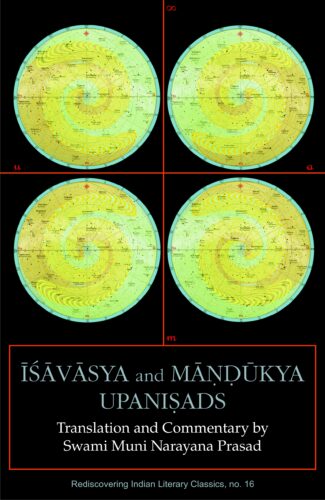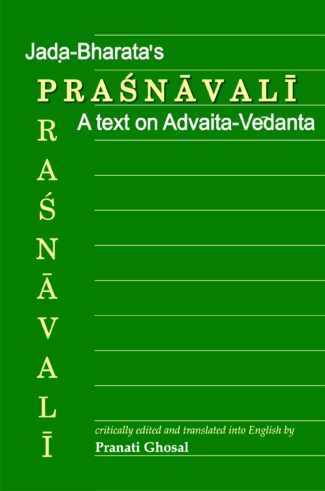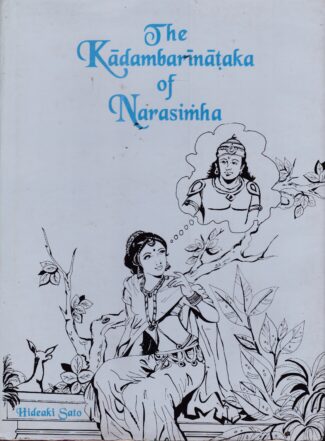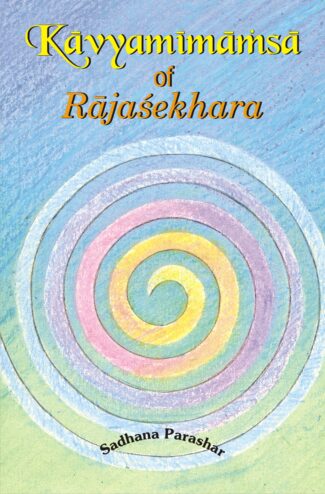Showing 41–50 of 143 results
The experiences and knowledge from our past are recorded in manuscripts which have been handed down to us over several thousand years. The Government of India, through the Department of Culture, took note of the importance of this vast tangible heritage and, in order to preserve and conserve as well as to make access to this wealth easy, established the National Mission for Manuscripts (NMM). In order to disseminate the knowledge content of manuscripts, the Mission has taken up several programmes such as lectures, seminars and workshops. The Mission has published the proceedings of the above-said programmes under the following series: “Samiksika” (on conservation), “Tattvabodha” (comprising lectures based on manuscripts delivered by eminent scholars), “Samiksika” (research-oriented papers presented in the seminars), “Krtibodha” (transcribed and edited texts prepared at advanced level manuscriptology workshops conducted by NMM) and “Prakasika” (publication of rare, unpublished manuscripts). The present work, Samiksika-16 comprises the proceedings of the conference on History and Development of Mathematics held in the Samskrita Academy, Chennai in collaboration with the National Mission for Manuscripts.
“India is well-known for her cultural and literary traditions, which are normally alien to the West of the twentieth century. Her wide literature is a huge treasure house. So also are her folk tales which showcase her cultural milieu. For generations, the legends of India remained vigorously active by transferring from lip to lip in the absence of any print medium, and this book is an English translation of ninety-three tales selected from a Gujarati volume, “KautukamÀÒÀ” or “Bodhavacana”, which appeared first in 1885. This book is expected to give an insight to the then West into the cultures, customs and traditions of the East through its folk tales. It will promote a larger acquaintance of the West with Indian moorings, resulting in a heartier appreciation of, the native thoughts and native customs, the practical wisdom and ripe experience. It shows considerable skill in shifting and arranging the rude materials collected from many sources and in investigating half-forgotten local chronicles of wit and humour. It also satirizes the faults and extravagances of the then Indian village community to a certain extent. The book should make an interesting and amusing reading for the English-knowing people interested in Indian folklore.”

The title of the book Indian Philosophical Wisdom: Some Glimpses itself signifies its importance. Indeed, philosophy is involved in every sphere of human life — literature, creative art, culture, etc. The author in her zeal to unravel the precious accumulated wisdom of Indian philosophy delved in its treasure with different approaches — historical, analytical, comparative, etc. An attempt has been made in this book to expound Indian philosophical systems and to analyse critically their logical implications.
The title of the book Indian Philosophical Wisdom: Some Glimpses itself signifies its importance. Indeed, philosophy is involved in every sphere of human life — literature, creative art, culture, etc. The author in her zeal to unravel the precious accumulated wisdom of Indian philosophy delved in its treasure with different approaches — historical, analytical, comparative, etc. An attempt has been made in this book to expound Indian philosophical systems and to analyse critically their logical implications.
This work consists of twenty-seven articles both unpublished and published in journals and from different academic forums aimed towards making a documentation of discussions on various systems of Indian philosophy, Upaniṣadic and Yoga philosophy in particular. This could be a ready reckoner on the subject for young and enterprising students and scholars who possess innate inquisitiveness to unearth the sagacity enshrined in Indian philosophy.

The book contains the original texts in Sanskrit, Roman transliteration and detailed commentaries on the Ishavasya and Mandukya Upanishads, explaining the basic message of the Upanishads Þ Brahmavidya or the science of the Absolute Þ in different ways, the questions asked in each being different.
The volume contains a detailed commentary on two important Upanishads, the Ishavasya and the Mandukya.
The Isha Upanishad states straightaway what Brahmavidya is. It clarifies three different paths in human life: two leading to final liberation and unconditioned happiness and the third leading to the demonic world of darkness and sufferings in life.
The Mandukya Upanishad, which is also the shortest Upanishad, states concisely what Vedanta basically teaches (Everything here indeed is Brahman), how everything is to be conceived, and how it is to be equated with aum. It explains how the monosyllable aum condenses within itself Brahman or atman, the substance in all the worlds.
The volume gives the original texts of the Upanishads in Sanskrit, their Roman transliteration and a commentary for each. It explains the basic message of the Upanishads Brahmavidya or Atmavidya or Vedanta or the science of the Absolute in different ways, the questions asked in each being different. It takes a fresh look at the Upanishads keeping in view all modern developments of thought in science as well as philosophy. The work will interest scholars and students of Hindu philosophy and religion.

Professor Filippi explores the Indian view of mortal existence from an individuals conception to his/her journey to the Kingdom of Yama with rare scientific objectivity by unveiling a complex network of sentiments, beliefs, scriptural references, customs, etc.
Prasnavali, a less-known yet important treatise, ascribed to Jadabharata, poses fifty-two fundamental questions on Monistic Philosophy. Novelty of this book lies in its question-answer technique provided for both teaching and propagation of Advaita Vedànta in an easy way. In spite of being small in size, the work covers almost all the important topics expected to be known by a devotee or a learner. There may be different groups of scholars and students of Vedanta affiliated to various mathas who long for finding proper answers to the queries that arise in this field from time to time. Jadabharata earnestly took up this uphill task through this treatise. Thus he deserves a special credit for creating interest in Advaitism among the people belonging to the community of both the learners and devotees.

This is the first-ever English translation of Narasimhas Kadambarinataka and its critical evaluation. It highlights the plays importance in Sanskrit-Prakrt literature of medieval India and compares it with the kavyas of classicists like Sudraka.
It is the first ever English translation of Narasimhas Kadambarinataka. And also its first critical evaluation, highlighting not only its high importance in Sanskrit-Prakrit literature of medieval India, but also how this fourteenth-century play compares favourably with the masterly kavyas of the classicists like Sudraka, Kalidasa, Bhavabhuti and Rajashekhara.
Kadambarinataka is essentially a dramatic version of Kadambari : an internationally celebrated novel/romance of the seventh century, authored by the legendary Bana and his son. For over six centuries, it has remained unacknow-ledged and unnoticed owing to the prevailing prejudice against the whole range of Sanskrit-Prakrit literature that came to be written after the 10th century or so. Though the play saw its only printed edition in 1936, it was not studied in perspective nor has it so far been translated into any language. Dr. Hideaki Sato retrieves Kadambarinataka from the centuries of oblivion, offering this literary masterpiece, in two parts, to English-knowing audiences the world over. Part One, in the nature of a critical introduction, focusses on Narasimha: the author, his times and his writings; together with insightful analyses of his natakas sources, plot structure, language, style, innovative elements, and how far it has deviated from Banas Kadambari. Part Two comprises the English rendering of Kadambarinataka which, based directly on its two manuscripts available today, also carries extensive textual notes.

The book presents the original Sanskrit text of the Kampilyamahatmya of Durgadatta Sharma, a harmonic compilation on the greatness of Kampilya composed from different references to traditional Indian sources, along with its translation in English. It deals with identification and location of the holy tirtha of Kampilya and ancient legends and dynasties associated with it.
The mahatmyas constitute an important streams of the Indian tradition, putting in evidence the greatness either of a place or of a character. Among the many mahatmyas, the Kampilyamahatmya, focusing its attention on the region of Kampilya, has a unique significance, as the exact identification and location of the holy tirtha of Kampilya remains a subject of mystery and controversy even today. Kampilya was the capital of the ancient realm of Pancala. The area around Kampilya, also known as Kaliksetra was the environment where King Drupadas daughter, Draupadi, manifested herself and where the tournament for the choice of her husband took place. Dronacarya, the weapon teacher of the Pandavas, Dhrstadyumna, the brother of Draupadi, and many other famous warriors of the Mahabharata have their names joint with this place. Written in the twentieth century, the Kampilyamahatmya is a harmonic compilation on the greatness of Kampilya composed from different references of Indian traditional sources; it is the result of a research begun by the grandfather of the author, that has been accomplished, through family transmission and with the help of other poets’ previous works. The book, presenting the original Sankrit text, with its fluent translation in English, provides a plethora of information on ancient legends and dynasties of pre-Pauranic and Pauranic times, will be useful to scholars of ancient Indian mythology and history. It will prove extremely absorbing and informative for general readers as well.

This English version attempts to unravel the mystery of death. It shows how a young seeker, calling upon Yama, insists on knowing the secret of all secrets, with specific questions, like: what is death? Why people fear death when they know it to be inevitable?
Man has always been perplexed with the now and hereafter of his worldly existence. The enigma, called life, with all its attendant uncertainties and everyday strifes and irritants, continues to defy experimental/realistic investigation despite all the exciting advances in science. We still age, we still die. We are as mortal as ever. Life remains a mystery. And death remains, in Shakespearean phraseology, the undis-covered country. A masterpiece among the writings of its genre, Katha Upanishad attempts to unravel the mystery of death though, in its totality, it is an insightful exposition of brahmavidya: Knowledge of the Absolute/Supreme Reality. In a well-devised dialectical situation, the Upanishad shows how a young seeker, calling upon Yama, none other than the God of Death himself, insists on knowing the secret of all secrets, with specific questions, like: What is death? Why people fear death when they know it to be inevitable? What happens at death? And what, if anything, continues to exist after death, and how? the questions which the deity answers, amidst widely-ranged wisdom teachings. Swami Muni Narayana Prasad here offers a lucid English version of this time-honoured Upanishad, together with exhaustive commentary, the original Sanskrit text and its Roman transliteration. Written at a time when the profoundly symbolic Vedic yajnas/rituals had degenerated into crass priestcraft, the Katha Upanishad not only has its historical importance, but counts among the landmark writings that have shaped Indias heritage of spirituality and philosophic thought.
कौटिल्य-अर्थशास्त्र प्राचीन भारतीय आर्थिक परम्परा का आधारभूत ग्रन्थ है। भारत का प्राचीन आर्थिक इतिहास सामाजिक संरचना, राजनीतिक मान्यताओं इस ग्रन्थ में जो प्रतिनिधिक वर्णन मिलता है, वह किसी भी अन्य ग्रन्थ में दुर्लभ है। सत्ता एवं शक्ति, न्याय एवं दण्डनीति, वार्ता एवं आन्वीक्षिकी, नगर-जनपद-ग्राम्य की संरचना से लेकर सुचारू अर्थव्यवस्था, स्वर्ण-नीति, मौद्रिक-नीति एवं लोक-कल्याणकारी तथा निष्टकण्टक राज आदि सिद्धान्त, कौटिल्य-अर्थशास्त्र को विश्व के आर्थिक इतिहास में महत्वपूर्ण ग्रन्थ के रूप में प्रतिष्ठित करते हैं। कौटिल्य के अर्थशास्त्र में विषय-वस्तु की गहनता एवं ऐतिहासिक कालक्रम में उनका इदम्प्रथमतया प्रणयन कौटिल्य को विश्व में अर्थशास्त्र का पुरोधा घोषित करते हैं।

Written sometime during 880-920 ad by Rajasekhara: an eminent poet, this first English translation of Kavyamimamsa is a kind of practical treatise for poets: kavisiksa manual highlighting, all possible attributes that go into the making of a good poet and a good poetic composition.
As a body, Sanskrit writings unfold Indias millennia-long, almost unbroken intellectual tradition: not only of philosophy and grammar, but of literary theory as well. The concepts and critical theories, which the Sanskrit poeticians advanced or the issues they sought to address, inhere both universal appeal and validity. And, with certain modifications, these can well live up to the demands of modern literature. In this long and powerful tradition of Sanskrit literary theory that marked a definitive begining with Bharatas Natyashastra (first century ad), Kavyamimamsa is a monumental work. Written sometime during 880-920 ad by Rajashekhara: an eminent poet, dramatist and critic, it is a kind of practical treatise for poets: kavishiksha manual highlighting, as it does, all possible attributes that go into the making of a good poet and a good poetic composition. Among other relevant aspects, Rajashekhara also includes here a systematic exposition of the views/opinions of his predecessors, with illustrations of the literary practices of various times and climes put down after careful empirical observation. Now, when there is a growing scholarly interest in the study of Sanskrit literary theory and how it is positioned vis-a-vis the Western critical tenets, Dr. Sadhana Parashar brings Rajashekharas classic within everyones reach offering the first-ever, complete English translation of Kavyamimamsa, with its original Sanskrit text and comprehensive explanatory notes. For sure, it is invaluable to the scholars of linguistics and literary criticism.